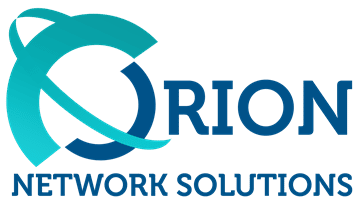AI Ranks In The Top Investment Areas For Small Business: 2025 Guide
Small businesses recognize artificial intelligence as one of the most promising investment opportunities of 2025. Recent data shows that one-third of CEOs report increased revenue and profitability from AI investments over the past year, with half expecting continued profit growth in the coming months. This shift represents a fundamental change in how smaller companies view technology spending, moving AI from a luxury for large corporations to an essential business tool.

The appeal of AI investment lies in its immediate impact on operations and long-term growth potential. Small businesses that invest strategically in AI technologies can achieve significant efficiency gains, reduce costs, and create new revenue streams while remaining competitive in rapidly evolving markets. However, success requires understanding which AI solutions offer the best returns and how to implement them effectively within limited budgets and resources.
This comprehensive guide examines small businesses’ current AI investment landscape, exploring practical opportunities, key platforms, and strategic considerations. Business owners will discover actionable insights about AI’s impact, investment options, major market players, and essential skills needed to capitalize on this transformative technology.
Key Takeaways
- AI investments deliver measurable returns for small businesses through increased efficiency and new revenue opportunities.
- Strategic AI implementation requires careful selection of platforms and solutions that match business needs and budget.s
- Building AI readiness involves developing workforce skills and understanding long-term market trends to maximize investment potentia.l
AI Ranks In The Top Investment Areas For Small Business

Small businesses are rapidly increasing their artificial intelligence investments, ranking AI technology among the top priorities for business leaders in 2025. Recent data shows significant growth in AI adoption rates, driven by proven productivity gains and these technologies’ competitive advantages to smaller enterprises.
Recent Trends Driving AI Investment Popularity
The surge in AI investments among small businesses reflects several key market developments. One-third of CEOs report that generative AI has increased revenue and profitability over the past year.
Small businesses are following the lead of larger corporations. Major companies have demonstrated measurable results from AI technology implementations. This success has created confidence in AI’s potential for smaller operations.
Cost reductions have become a major driver. AI tools now offer affordable solutions previously only available to large enterprises. Cloud-based AI services have eliminated the need for expensive infrastructure investments.
The competitive landscape has also shifted dramatically. Nearly 40% of companies started competing in new sectors within the last five years. Small businesses recognize that AI adoption is essential to remain competitive in these evolving markets.
Productivity gains represent another significant factor. More than half of business leaders report that generative AI has created efficiencies in employee time management. These improvements translate directly to cost savings for resource-conscious small businesses.
Data on AI Adoption by Small Businesses
Current research reveals promising adoption patterns across small business sectors. Approximately 49% of business leaders expect AI to increase company profitability within the next 12 months.
The employment impact has been more balanced than expected. While 13% of companies reduced headcount due to AI implementation, 17% increased their workforce as AI investments created new opportunities.
Investment priorities show clear patterns:
- Technology platform integration: 48% of companies
- Business process automation: 45% of companies
- New product development: 32% of companies
- Workforce strategy integration: 33% of companies
Revenue generation from AI investments varies by region. Companies in mainland China report the highest returns, with 60% seeing increased revenue from AI-related investments. North American small businesses show more moderate but steady growth patterns.
The timeline for results appears realistic. About two-thirds of companies have not seen concrete financial results from AI technology. However, early adopters report significant advantages in operational efficiency and customer service capabilities.
Key Factors Influencing Small Business Investments in AI
Resource allocation remains the primary consideration for small business AI investments. Business leaders must balance immediate operational needs with long-term technology investments. Over five years, the average company generates only 7% of revenue from new business initiatives.
Trust and reliability concerns affect investment decisions significantly. Small businesses require proven AI solutions rather than experimental technologies. They prioritize vendors with established track records and clear support systems.
Market positioning drives many investment choices. Small businesses use AI to compete with larger companies that have greater resources. AI technology levels the playing field in areas like customer service, data analysis, and marketing automation.
Implementation complexity influences investment timing. Small businesses favour AI tools that integrate easily with existing systems. They avoid solutions requiring extensive technical expertise or major workflow changes.
Financial considerations remain critical. Small businesses need clear return on investment projections before committing to AI technology. They prefer subscription-based pricing models over large upfront investments.
Regulatory compliance also shapes investment decisions. Small businesses in regulated industries must ensure AI tools meet industry standards. This requirement often limits their technology choices but increases confidence in selected solutions.
Understanding Artificial Intelligence And Its Business Impact

Artificial intelligence transforms small businesses’ operations through automated tasks, data analysis, and customer service improvements. AI tools now handle everything from scheduling appointments to analyzing customer patterns, making advanced technology accessible to companies of all sizes.
Defining Artificial Intelligence and Large Language Models
Artificial intelligence refers to computer systems that perform tasks typically requiring human intelligence. These systems learn from data, recognize patterns, and make decisions without constant human input.
Machine learning forms the backbone of most AI applications. It allows computers to improve their performance by analyzing large amounts of information. Small businesses use machine learning to predict inventory needs and understand customer behaviour.
Large language models represent a specific type of AI that understands and generates human-like text. ChatGPT and similar tools fall into this category. These models can write emails, answer customer questions, and create marketing content.
Key AI Technologies for Business:
- Natural Language Processing: Understands written and spoken language
- Predictive Analytics: Forecasts trends based on historical data
- Computer Vision: Analyzes images and videos
- Automation Software: Handles repetitive tasks without human input
LLMs have made AI more accessible to small businesses. Previously, companies needed technical teams to implement AI solutions. Now, business owners can use simple interfaces to deploy powerful AI capabilities.
Role of AI Tools and Automation in Business Operations
AI tools automate time-consuming tasks that previously required manual work. Customer service chatbots handle basic inquiries 24 hours a day. Scheduling software automatically books appointments and sends reminders to clients.
Financial management becomes more efficient with AI-powered bookkeeping tools. These systems categorize expenses, track invoices, and generate reports. Small business owners spend less time on paperwork and more time growing their companies.
Common AI Applications in Small Business:
- Customer service automation
- Email marketing personalization
- Inventory management and forecasting
- Social media content creation
- Expense tracking and financial reporting
Marketing benefits significantly from AI deployment. Tools analyze customer data to create targeted campaigns. They determine the best times to send emails and identify which products customers might purchase next.
AI automation reduces human error in data entry and calculations. It processes information faster than manual methods. This speed advantage helps small businesses compete with larger companies that have more staff.
Case Studies of AI Deployment in Small Companies
A local restaurant chain implemented AI chatbots to handle phone orders and reservations. The system reduced wait times by 40% and allowed staff to focus on food preparation. Order accuracy improved because the AI never misheard customer requests.
A small accounting firm deployed AI tools for document processing. The software automatically extracts data from receipts and invoices. Processing time dropped from hours to minutes per client. The firm now handles 50% more clients with the same staff size.
Measurable Benefits Across Industries:
- Retail: 30% improvement in inventory turnover
- Professional services: 25% reduction in administrative time
- Manufacturing: 20% decrease in scheduling conflicts
- Healthcare: 35% faster appointment booking
An online retailer used machine learning to optimize product recommendations. Sales increased by 22% within six months. The AI analyzed purchase history and browsing patterns to suggest relevant customer items.
A construction company implemented AI scheduling software to coordinate projects and worker assignments. The system reduced project delays by 15% and improved resource utilization. Workers spent less time waiting for materials and equipment.
Top Opportunities: AI Investment Options For Small Businesses
Small business owners can access AI investments through individual stocks of technology companies, diversified exchange-traded funds focusing on artificial intelligence, or by evaluating emerging startups and private investment opportunities. Each option offers different levels of risk, potential returns, and capital requirements.
AI Stocks And How To Access Them
Individual AI stocks provide direct exposure to companies developing artificial intelligence technologies. Major players include chip manufacturers like Nvidia and AMD, cloud computing providers like Oracle and Amazon, and software companies like Palantir and Microsoft.
Small businesses can purchase these stocks through any standard brokerage account. Most online brokers offer commission-free stock trading, making it affordable to start with small investments.
The key advantage is targeted exposure to specific companies you believe will succeed. However, individual stocks carry higher risk since your investment depends on one company’s performance.
Popular AI stock categories include:
- Semiconductor companies (Nvidia, AMD, Broadcom)
- Cloud infrastructure providers (Amazon, Microsoft, Google)
- AI software platforms (Palantir, Oracle)
- Streaming and data companies (Netflix, Meta)
Research each company’s AI initiatives before investing. Look at revenue growth from AI products and partnerships with other technology firms.
Investing in Exchange-Traded Funds and Diversified Portfolios
Exchange-traded funds offer instant diversification across multiple AI companies with a single purchase. This reduces risk compared to individual stocks while still providing AI exposure.
The Global X Artificial Intelligence and Technology ETF holds 86 stocks, including Netflix, Palantir, and Samsung. It has $3.21 billion in assets and charges a 0.68% expense ratio.
AI-focused ETFs typically hold between 50-100 companies. This spreads risk across semiconductor makers, software developers, and hardware manufacturers.
Top AI ETFs for 2025:
| ETF Name | Assets | Expense Ratio |
|---|---|---|
| Global X AI & Technology (AIQ) | $3.21 billion | 0.68% |
| Global X Robotics & AI (BOTZ) | $2.34 billion | 0.68% |
| iShares Future AI & Tech (ARTY) | $788.1 million | 0.47% |
ETFs trade like stocks through your brokerage account. They provide professional management and automatic rebalancing as the AI sector evolves.
Evaluating AI Startups and Private Opportunities
Private AI investments include angel investing, venture capital funds, or crowdfunding platforms. These offer access to early-stage companies before they go public.
Startups often focus on specific AI applications like healthcare, finance, or manufacturing automation. This allows targeted investment in industries relevant to your business.
Key evaluation criteria include:
- Management team experience
- Proprietary technology or patents
- Clear revenue model
- Market size and competition
- Funding history and current investors
Private investments typically require higher minimum amounts and longer holding periods. Money may be locked up for 3-7 years until the company goes public or gets acquired.
Crowdfunding platforms like StartEngine allow smaller investments in AI startups. However, these carry significant risk since most startups fail.
Consider allocating only 5-10% of your investment portfolio to private opportunities. Focus on companies with proven business models and experienced leadership teams.
Major Players And Platforms In The AI Investment Landscape
The AI investment landscape features established tech giants, emerging foundation model providers, and specialized platforms competing for market dominance. Microsoft leads with 39% market share in AI platforms, while NVIDIA dominates hardware with 92% of the data center GPU market.
Leading AI Companies And Technology Providers
NVIDIA maintains clear hardware dominance with 92% of the data center GPU market in 2024. The company generated over $115 billion in revenue, up 142% year-over-year. Its H100 Tensor Core GPUs and Blackwell architecture remain industry standards.
Microsoft captures the largest platform market share at 39% through Azure AI services. The company invested $10 billion in OpenAI and plans another $80 billion in 2025 for AI infrastructure development.
AWS holds 19% of the foundation model market through its Bedrock and SageMaker platforms. The company offers access to multiple AI models, including its NOVA series and third-party options from Anthropic and Cohere.
AMD will grow as NVIDIA’s primary challenger, with a 4% market share in 2024. The company’s MI300X GPUs shipped to major clients like Meta and Microsoft, offering cheaper alternatives to NVIDIA’s products.
Large Language Models: ChatGPT, Claude, and Innovators
ChatGPT sparked the generative AI boom two years ago, driving industry growth. The model helped expand the combined AI software and services market from $191 million in 2022 to $25.6 billion in 2024.
Claude represents Anthropic’s competitive offering in the large language model space. AWS invested $4 billion in Anthropic, strengthening the partnership and expanding Claude’s enterprise reach through AWS infrastructure.
DeepSeek emerged as a disruptive force with smaller, more efficient models that challenge existing paradigms. These innovations affect pricing and efficiency across the AI value chain.
Foundation models drive enterprise adoption across multiple industries. Companies increasingly integrate these pre-trained models into business operations rather than building solutions from scratch.
Role of Tech Giants: Google, OpenAI, and More
Google competes through its cloud AI services and proprietary models, though specific market share data remains limited. The company leverages its search and cloud infrastructure to support AI development.
OpenAI maintains influence through its Microsoft partnership despite not being a public company. Its models power Microsoft’s Azure AI platform, contributing to Microsoft’s market leadership position.
Chinese companies have gained ground with Huawei, securing 2% of the GPU market through its Ascend AI chips. China’s growing innovation capabilities in universities and domestic companies create new competitive dynamics.
Hyperscalers dominate GPU purchasing, with AWS, Google, and Microsoft as the biggest buyers. Meta also increases GPU investments to support its AI initiatives and infrastructure expansion.
Building AI Skills And Readiness In Small Businesses
Small business owners need specific AI skills to lead successful technology adoption, while their teams require training on practical AI tools for daily operations. Strategic education programs and gradual integration approaches help businesses build confidence and capability without overwhelming existing workflows.
Importance of Developing AI Skills for Owners and Teams
Business leaders must understand AI capabilities before making investment decisions. They need basic knowledge about machine learning, automation tools, and data requirements to choose the right solutions for their companies.
Skills gaps create major barriers to AI adoption. Research shows that 72% of organizations report an AI skills shortage. This prevents many small businesses from moving beyond basic AI applications.
Essential skills for owners include:
- Understanding AI terminology and basic concepts
- Evaluating AI vendor claims and capabilities
- Planning data collection and management strategies
- Assessing costs versus potential productivity gains
Team members need different skills based on their roles. Customer service staff benefit from learning chatbot management. Marketing teams should understand content generation tools. Accounting staff can use AI to categorize expenses and perform financial analyses.
Cross-functional collaboration becomes critical when implementing AI tools. Teams must work together to ensure data flows properly between systems and departments.
Resources for AI Education and Training
Online learning platforms offer affordable AI courses designed for business applications. Coursera, LinkedIn Learning, and local community colleges provide practical training programs.
Popular training options include:
- Free resources: Google AI courses, Microsoft AI fundamentals, YouTube tutorials
- Paid programs: Industry-specific workshops, vendor certification courses
- Local support: Chamber of commerce seminars, small business development centres
Government funding helps offset training costs. The Canadian government’s $2.4 billion AI investment includes programs to help businesses develop AI capabilities through education and support services.
Vendor-provided training often delivers the most practical value. Companies like Salesforce, Microsoft, and Google offer free training on their AI tools. This helps businesses learn while using actual software they plan to implement.
Professional associations in specific industries provide targeted AI education. Retail associations teach inventory management AI, while healthcare groups focus on patient data applications.
Integrating AI Tools for Improved Productivity
Start with simple tools that solve immediate business problems. Email automation, scheduling assistants, and basic chatbots provide quick wins without complex setup requirements.
Gradual integration approach:
- Months 1-2: Test free AI writing and scheduling tools
- Months 3-4: Add customer service chatbots
- Months 5-6: Implement inventory or accounting AI features
Data quality determines AI success. Businesses need clean, organized information before AI tools can provide useful insights. Poor data leads to unreliable AI recommendations and wasted investment.
Integration challenges often involve connecting new AI tools with existing software systems. Cloud-based AI services typically offer easier integration through standard APIs and pre-built connections.
Staff resistance decreases when employees see AI tools helping rather than replacing their work. Training should emphasize how AI handles repetitive tasks so workers can focus on creative and strategic activities.
Monitor results carefully during the first few months. Track time savings, error reduction, and customer satisfaction improvements to measure AI tool effectiveness and justify continued investment.
Strategic Considerations And Future Outlook For AI Investments
Small businesses must evaluate AI investments carefully to maximize returns while managing implementation challenges. Success requires clear alignment with business objectives and realistic assessment of growth potential in the market.
Aligning AI Investments with Business Goals
Small businesses need specific investment goals before purchasing AI tools. Companies should identify which operations AI can improve most effectively.
Priority Areas for AI Investment:
- Customer service automation
- Data analysis and reporting
- Inventory management
- Marketing personalization
Business owners must match AI capabilities to their actual needs. A retail store benefits more from inventory tracking systems than complex TPU-based machine learning models.
Companies should start with simple AI tools that solve immediate problems. Advanced AI deployment works better after businesses understand basic automation benefits.
Budget planning requires realistic timelines for AI implementation. Most small businesses see results within 6-12 months of proper AI deployment.
Balancing Risk and Reward
AI investments carry both opportunities and challenges for small businesses. Research from McKinsey shows most companies struggle with scaling AI beyond pilot projects.
Key Risk Factors:
- High upfront costs
- Employee training requirements
- Integration complexity
- Data security concerns
Small businesses can reduce risks by starting with proven AI solutions. Cloud-based tools offer lower entry costs than custom AI development.
Companies should allocate 10-20% of their technology budget to AI investments. This approach allows testing without major financial exposure.
Employee training represents a significant cost factor. Businesses must budget for staff education alongside technology purchases.
Data quality affects AI performance directly. Poor data inputs lead to unreliable results and wasted investment.
Predictions for AI Investment Growth
Small businesses will increase AI spending by 40% over the next two years. Government initiatives support adoption of AI by rural and urban businesses.
The banking sector expects continued growth in AI investments despite economic headwinds. This trend extends to small business lending for technology upgrades.
Growth Drivers:
- Increased AI tool availability
- Lower implementation costs
- Government support programmes
- Competitive pressure
AI deployment will become standard practice rather than a competitive advantage. Early adopters gain temporary benefits before markets normalize.
Businesses will focus on practical AI applications. Customer service chatbots and automated bookkeeping show the highest adoption rates.
Cross-border AI investment opportunities will expand. Small businesses can access AI platforms more easily than before.









